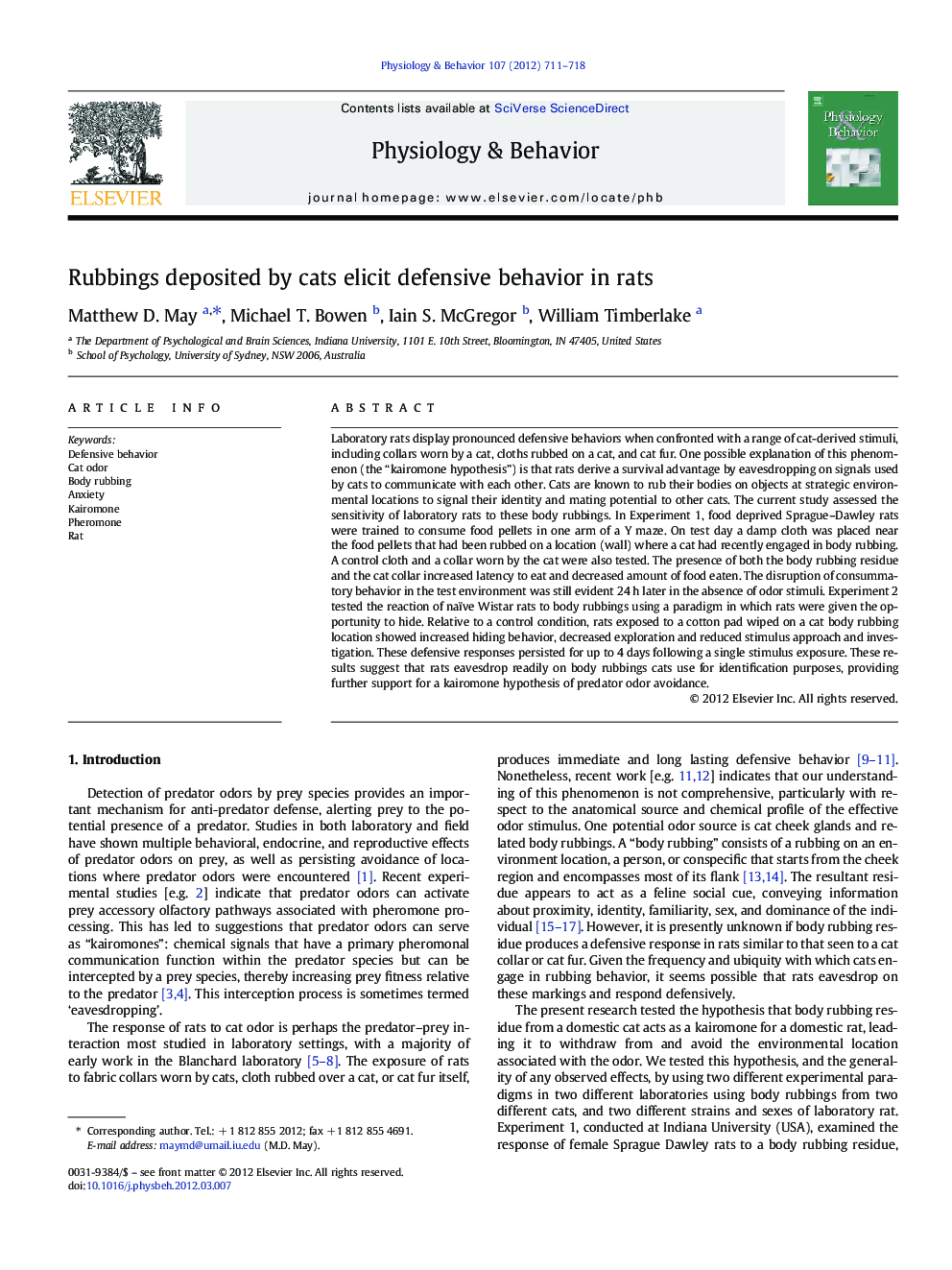| Article ID | Journal | Published Year | Pages | File Type |
|---|---|---|---|---|
| 2844417 | Physiology & Behavior | 2012 | 8 Pages |
Laboratory rats display pronounced defensive behaviors when confronted with a range of cat-derived stimuli, including collars worn by a cat, cloths rubbed on a cat, and cat fur. One possible explanation of this phenomenon (the “kairomone hypothesis”) is that rats derive a survival advantage by eavesdropping on signals used by cats to communicate with each other. Cats are known to rub their bodies on objects at strategic environmental locations to signal their identity and mating potential to other cats. The current study assessed the sensitivity of laboratory rats to these body rubbings. In Experiment 1, food deprived Sprague–Dawley rats were trained to consume food pellets in one arm of a Y maze. On test day a damp cloth was placed near the food pellets that had been rubbed on a location (wall) where a cat had recently engaged in body rubbing. A control cloth and a collar worn by the cat were also tested. The presence of both the body rubbing residue and the cat collar increased latency to eat and decreased amount of food eaten. The disruption of consummatory behavior in the test environment was still evident 24 h later in the absence of odor stimuli. Experiment 2 tested the reaction of naïve Wistar rats to body rubbings using a paradigm in which rats were given the opportunity to hide. Relative to a control condition, rats exposed to a cotton pad wiped on a cat body rubbing location showed increased hiding behavior, decreased exploration and reduced stimulus approach and investigation. These defensive responses persisted for up to 4 days following a single stimulus exposure. These results suggest that rats eavesdrop readily on body rubbings cats use for identification purposes, providing further support for a kairomone hypothesis of predator odor avoidance.
► Cat body rubbings are used in feline communication. ► These rubbings have not been tested to elicit defensive behavior responses in rats. ► We used two paradigms, food/Y-maze and hide box, to test rubbings. ► Body rubbing exposed rats displayed similar behaviors as cat collar exposed rats. ► Cat body rubbings are involved in intra- and inter-species contact as kairomones.
